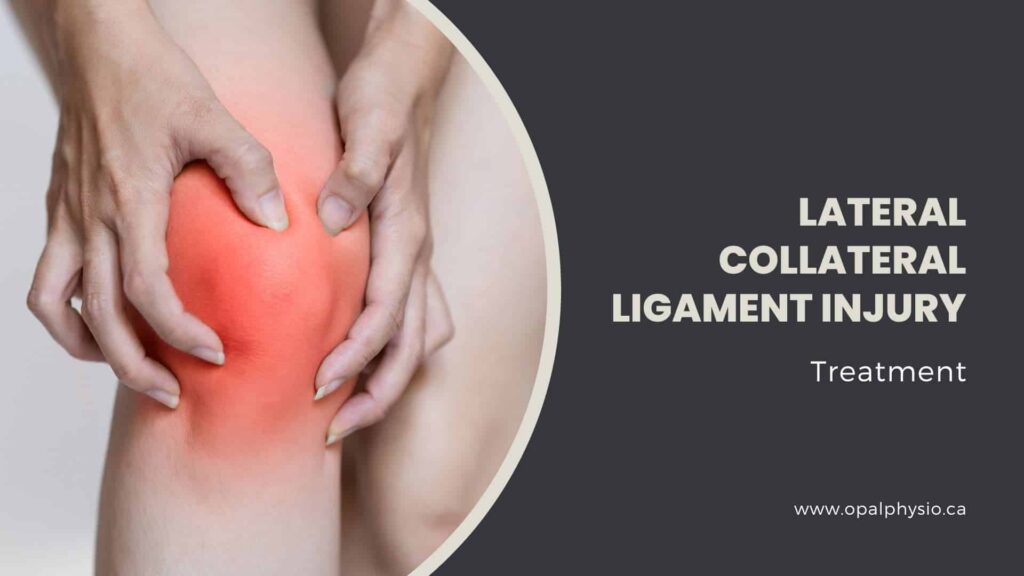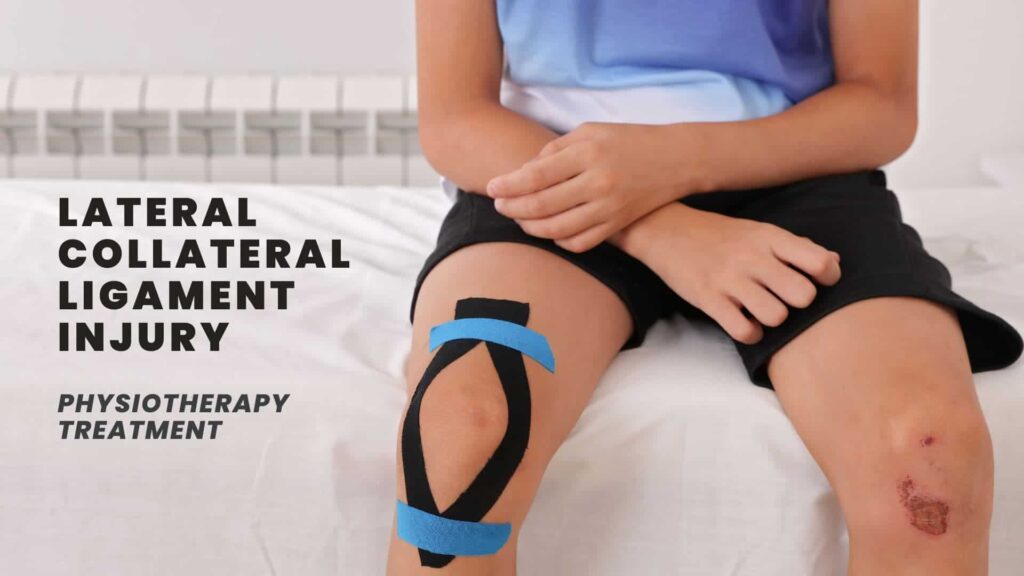Lateral Collateral Ligament Injury
Physiotherapy is a crucial and effective conservative treatment approach for Lateral Collateral Ligament injuries. Physiotherapy helps with pain relief, improves joint mobility, reduces long-term effects due to ligament injury, and helps patients recover fully after a surgical repair.

Lateral collateral ligament (LCL)
The Lateral Collateral Ligament (LCL ), also known as the Fibular Collateral Ligament, is a connective tissue that runs in the lateral aspect of the knee. It is a band-like tissue that connects the lower part of your thigh bone (femur) to the top part of your shin bone (tibia) on the outer side of your knee. It is one of the ligaments in the knee; its job is to help keep your knee stable during movement.
What is a lateral collateral ligament injury?
The Lateral Collateral Ligament (LCL) is a major stabilizer of the knee joint, preventing excess varus and posterior-lateral rotation of the knee. An LCL tear is an injury to the lateral collateral ligament in the knee. It is a common injury in sports and a common cause of instability in the knee joint. The injury can lead to pain, swelling, and difficulty with movement.
The LCL injury can be quite painful and debilitating. Injuries to the LCL are most commonly seen after a high-energy blow to the anteromedial knee, combining hyperextension and extreme varus force. They typically occur with a sudden change in the direction of the leg, cutting, pivoting, or landing from a jump. The injury generally occurs during sports like basketball, soccer, and football.
Causes of LCL injury
LCL injuries are often associated with sports that involve high velocity, pivoting, and jumping, such as soccer, basketball, skiing, football, or hockey. Tennis and gymnastics have also been shown to have a high likelihood of isolated LCL injuries. The injury most commonly occurs when a player suddenly changes direction, quickly stops and plants their foot, or makes a sudden twisting motion or awkward landing.
The LCL injury is caused by excessive force across the knee, which occurs when there is an impact on the medial side of the joint, causing stress in the lateral knee. In severe trauma, LCL injury usually occurs concurrently with other ligament tears of the knee. Adults aged between 20-34 and 55-65 years old have been shown to have the highest incidence of LCL tears.
Types of tears in lateral collateral ligament injury
The three main types of tears in LCL injuries are determined by how much damage there is to the LCL.
- Sprain: The LCL is lengthened but not torn.
- Partial tear: The LCL is mild or partially torn at the site of injury
- Complete tear: There is a complete detachment of the ligament from bone under too much force, usually accompanied by other ligament injuries.
Signs and symptoms of a lateral collateral ligament injury/tear:
LCL injury symptoms may vary based on the extent of the damage and can cause :
Prevention strategies
Prevention strategies include strengthening and stretching the muscles around the knee, upper leg, and core. Learning correct knee positioning during athletic activities can also help prevent a recurrence of the injury.
Treatment for lateral collateral ligament injury
The most popular treatment option for a conservative approach is rest, physiotherapy and a gradual return to activities.
General treatment options for LCL injuries in mild to moderate tears may include:
However, when the injury is severe or complicated, it might require surgical repair. Surgery is usually reserved for severe injury cases or when other treatments have failed to heal the ligament properly. After surgery, the patient usually undergoes rehabilitation to regain strength and stability in their muscles and knee joints.

Physio treatment after a lateral collateral ligament injury in Langley.
Physiotherapy plays a pivotal role in the recovery from an LCL injury. The benefits of physiotherapy include pain reduction, swelling management, restoration of everyday movement, and strengthening of the knee and surrounding muscles.
Physiotherapy treatment after LCL includes a rehabilitation program that is devised to improve the strength and flexibility of the knee joint.
Physiotherapy treatment for Lateral Collateral Ligament injury varies depending on the recovery stage after the injury and the degree of damage. Usually, for strains and small tears, a conservative approach may include:
Acute management (Initial phase)
Sub-Acute Management
The aim is to achieve a full active range of motion (AROM) of the knee and progression of strength exercises of the quadriceps, glutes, gastrocnemius, and hamstrings.
Long-term management: Strength and functional recovery stage
The long-term management phase focuses on proprioception work and plyometric exercises. The goal is to restore normal biomechanics and achieve a stable, well-aligned knee. This may include
The timeline for recovery can vary depending on the severity of the injury. With appropriate treatment, the prognosis for LCL injuries is good, but recovery time may exceed four months in high-grade injuries.
Physiotherapy after a post-surgical LCL reconstruction surgery:
If the injury or tear is severe, you may require surgery. Accessing physiotherapy after the Lateral Collateral Ligament reconstructive surgery is very important. Physiotherapy rehabilitation at Opal Physio will start once your surgeon clears you and will progress based on the post-surgical protocol.
At Opal Physio, our physiotherapists can provide pre-operative or post-operative physiotherapy rehabilitation. The main focus is to help manage pain, restore normal movement, and strengthen the knee and surrounding muscles. Clients can expect a good prognosis and return to their normal activities with appropriate treatment and adherence to physiotherapy guidelines.
Contact us to schedule an appointment to help you recover from your LCL injury.
